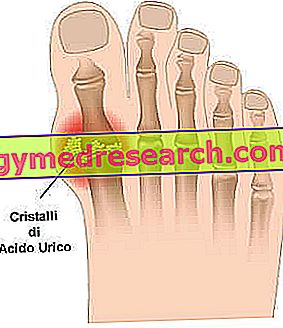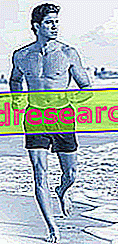Sixth Part
HOW LONG DOES AN ATHLETE HAVE TO STAY IN ALTITUDE OR IN THE HYPOBARY / HYPOXIC ENVIRONMENT TO OBTAIN THE EFFECTS ON PERFORMANCE?
The fact that short-term exposures (less than 10 hours for a period of time less than 3 weeks) do not induce an increase in Red Blood Cells seems to suggest the existence of a "threshold", but it is not known how much this minimum exposure / dose is related to the level of hypoxia, daily duration or total duration.
Athletes who live at 2500m, train at 2000-3000m and perform intense training at 1250m (= High-High-Low) have the same improvements as High-Low athletes, ie athletes who live high and play all 'low-level training
THEN:

2. The main mechanism lies in the stimulation of erythropoiesis, with increases in hemoglobin, blood volume and aerobic capacity.
3. The effect of this increase in the transport of O2 is amplified by the fact that subjects manage to maintain, during intense exercise, the normal flow of oxygen they have at sea level, avoiding the down regulation of the structure of skeletal muscle which occurs when training also takes place in hypoxia.
It is important to recognize that the pathway involved in erythropoiesis is a complex and non-linear pathway in which genetic variability plays a very important role; in this sense, however, there are still many studies to do.
INTENSITY OF THE EXERCISE
H = hypoxia
N = normoxia
Intense training: (4-6mmol / L lactate) at the same relative intensity = 66-67%
Not intense training: (2-3 mmol / L lactate) at the same relative intensity = 58-52%
The workloads were chosen so that the H-intense group and the N-low intensity group worked at a similar absolute power (54-59% of the maximum power in normoxia).
PERSONS NOT TRAINED: FUNCTIONAL RESULTS
The VO2max measured in normoxia increases by 9-11% regardless of altitude and type of training. However, when the VO2max is measured at 3200m, the N groups increase by only 3%, while the H groups increase by 7%. The 2 H groups achieved a higher performance than the N altitude groups.
Apart from the obvious advantages of hypoxic training for hypoxic performance, IN PERSONS NOT SPECIFICALLY TRAINED THE FUNCTIONAL IMPROVEMENTS IN STANDARDS HAVE BEEN SIMILAR.
NON-TRAINED SUBJECTS: STRUCTURAL MODIFICATIONS
5% increase in skeletal muscle volume (extensor of the knee) in the H-Intenso group. The length of the capillaries increases in the H-Intenso group. Mitochondria volume increases by 11-54% in all groups. Both intensity of work and hypoxia have a significant effect on the oxidative capacity of the muscle.
If exposure to hypoxia is limited to the duration of training, specific responses can be highlighted at the molecular level in skeletal muscle tissue.
H-high intensity training also induces an increase in VEGF (vascular endothelial growth factor), capillarity and myoglobin mRNA.
TRAINED ATHLETES
Hypoxia sessions replace all endurance work but not the technical aspects of training.
VO2 increases in subjects trained in hypoxia when measured at 500m, 1800m, 2500m, 3200m.
The lactate concentration and the Borg scale were significantly reduced to the maximum exercise intensity in the group trained in hypoxia but only to the training altitude.
The addition of hypoxic training sessions to the usual training sessions improves the mitochondrial function, increasing the control of the respiratory chain and determining a better integration between the request and the supply of ATP.
In the muscles after training in hypoxia (but not after training in normoxia) the mRNA concentrations of hypoxia-inducible factor 1alpha (+ 104%), glucose transporter -4 (+ 32%) are significantly increased at the molecular level of phosphofructokinase (+ 32%), peroxisome proliferator-activated receptor gamma coactivator 1alpha (+60), citrate synthase (+ 28%), cytochrome oxidase 1 (+ 74%) and 4 (+ 36%), carbonic anhydrase-3 ( + 74%), and manganese superoxide dismutase (+ 44%).
RESISTANT HALF-CORE: TRAINING IN HEIGHT
| 1st Week | - Aerobic resistance at increasing volume and intensity. - Technical work. |
| 2nd Week | - Aerobic resistance. |
| - Aerobic power: split up to 2 '. | |
| - Power I Aerobic resistance: split up to 6 '. - Technical work. | |
| 3rd Week | - Aerobic resistance. |
| - Race rhythms: repeated up to 3 'of effort. - Technical work. |
MARATHON: TRAINING IN ALTURA
| 1st Week | - Aerobic resistance at increasing volume and intensity. - Technical work. |
| 2nd Week | - Aerobic resistance: further increase in volume. |
| - Aerobic resistance / power: continuous and fractionated (6'-10 ') high intensity run. | |
| - Aerobic power / endurance: split up to 2 '. - Technical work. | |
| 3rd Week | - The pattern of the second week is repeated, with greater clarification of the high intensities |
 | " | 1 | 2 | 3 | 4 | 5 | 6 |
Edited by: Lorenzo Boscariol



